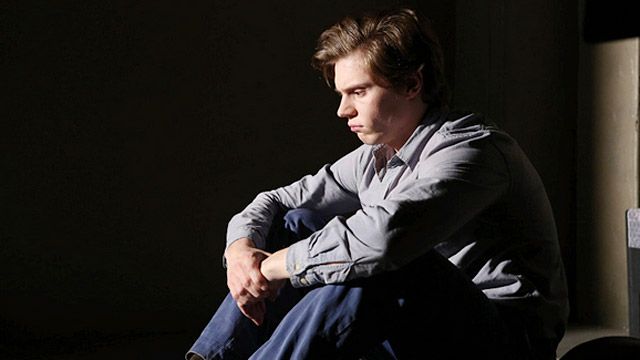Why is American Horror Story Asylum so crazy? Parataxis, of course.
Adam Rifkin stashed this in American Horror Story

Source: www.slate.com
Stashed in:
On parataxis, a grand unified theory of American Horror Story:
At the beginning of the Asylum season of AHS, I advocated “vibe-watching,” which I defined as engaging with a program in terms of its general aesthetic rather than its storyline. I still stand by that recommendation, but as this season has progressed I’ve become increasingly preoccupied with just what, exactly, the nature of that aesthetic is. Clearly, there’s an element of camp involved (we are talking about a Ryan Murphy creation after all); however, that’s only part of the mix. Last week’s episode, in which we jumped from nun-on-priest rape to hallucinated dance sequence to self-cremation of a former Nazi, clarified the other main ingredient: parataxis. Advertisement
Briefly, parataxis is the artistic or literary technique of placing unrelated materials beside one another to encourage the exploration of the unpredictable resonances that arise between them. It’s most popular in poetry—see John Ashbery’s The Tennis Court Oath, for example—but as television shows go, American Horror Story’s use of the technique seems particularly novel. Think of all the complaints that have been leveled at AHS: that it’s unwieldy, unfocused, fragmented, thinly written, hard to follow, overly frenetic; that its exotic macroseasonal “anthology” structure is confusing. Well, sure! If AHS is a work of paratactic art, those are welcome features, not bugs.
One fun thing about parataxis is that it invites the viewer to, in effect, “choose his own adventure,” to curate his own private program out of the elements and resonances of the aesthetic landscape that appeal to him (this is the primary pleasure of vibe-watching). But the flipside of that invitation is that parataxis has the tendency to inspire a kind of critical numbness in the face of the mass of seemingly unorganized material and lack of explicit authorial/narrative direction. You can readily see this numbness when you read recaps of AHS, all of which (including my own) usually amount to a sort of stoned “Whoa, man! Wasn’t that crazy?” When we’re bombarded rapid-fire with alien violations, boil-ridden amputees, failed self-induced abortions, half-crucifixions, sadistic electroshock sessions, and all the rest—and when those events and others seem to have little to do with one another—in the face of all that terror, we’re weirdly left numb.
Earlier, I questioned what binds us to this show, and the answer lies in this trick: We’re left numb, but not comfortably so. As the season has progressed, even as I continue to gasp with glee at this or that transgression and revel in the general cacophony of the thing, I’ve noticed a growing sense of disquiet in my gut, an aftertaste of anxiety at the close of each episode. In a word, I feel guilty. With each new act of cruelty, each push forward into the depths of human abjection, I feel a little more implicated, a little more tainted, and so, like any good viewer of horror, I hang around to be redeemed at the end.
But that’s where Murphy’s got us screwed. In almost all cases, horror, as a genre, provides its audience with an alibi to avoid the inherent guilt (assuming you’re not a certified sadist) of taking pleasure in violence. We are meant to identify with a striving victim, with the archetypal “final girl” who makes it out of the psychopath’s lair. We are absolved from enjoying her pain, because we are, of course, rooting for her ultimate escape. Unfortunately (and brilliantly), American Horror Story doesn’t give us that out. In Briarcliff, just as in Murder House before it, there are no morally uncomplicated heroes, no innocent characters to act as our confessors. Though individuals may from time to time act altruistically, everyone is dirty, and there is no redemption waiting at sunrise for them (in fact, if Murder House’s conclusion is any indication, they’re all likely to end up dead or otherwise beset)—or at the end of the season for us.
More on parataxis: http://en.wikipedia.org/wiki/Parataxis
Tess Lynch at Grantland:
I don’t know that I necessarily agree that American Horror Story: Asylum is paratactic, as Slate recently and somewhat convincingly argued, because after recapping it all season, I’m pretty sure I can connect the threads. It just takes six billion years and a lot of retracing of sadistic torture scenes.
Untangling the threads of this season is a pretty gnarly undertaking, even though I find it eerily easy to rattle off the arc of each jam-packed episode if I can find a trigger; I mean, God, remember Anne Frank? Unpacking the whole thing is like wrestling with the last moving box stuffed with everything from staplers to spaghetti. It kind of reminds me of Super Mario World, where all of the bopped Koopa Troopas and zinged Cheep-Cheeps disappear like Skittles at a fourth-grade slumber party as soon as you’ve leveled up; so many nemeses have been thwarted, it’s hard to figure out who the real enemy at Briarcliff actually is. Satan Mary has been fatally concussed. Sister Jude reformed herself, and then her brain was turned into cookie dough (but at least we got that Switch Palace of a dance routine out of it). Arden is BBQ. I really thought Bowser would turn out to be the Nazi, but I was wrong.
More on "Spilt Milk":












12:12 AM Jan 17 2013